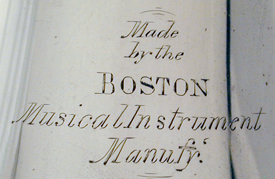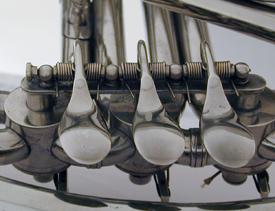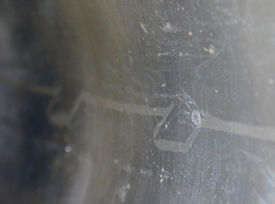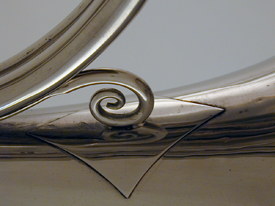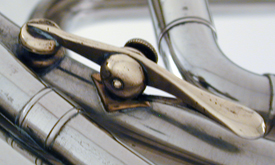| Label:
|
Made by the BOSTON Musical Instrument Manuf'y. |
||
|
Model:
|
Wright Single (right-handed) |
||
|
Serial Number:
|
none |
||
|
Date of Manufacture:
|
ca. 1875 |
||
|
Key(s):
|
F | ||
|
Valves:
|
3 rotary | ||
|
Bore:
|
12.45 mm. |
||
|
Bell Flare:
|
single seam, no
garland |
||
| 7.2 cm. |
|||
|
Bell Diameter:
|
29.4 cm. |
||
|
Base Metal:
|
nickel-silver (German silver) |
||
|
Finish:
|
unlacquered | ||
| . (clck on photos for larger view) |
|||
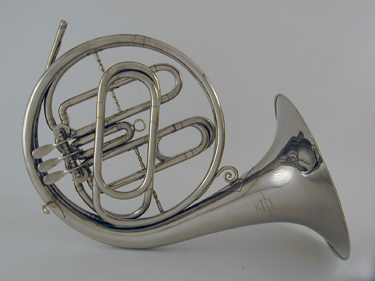 |
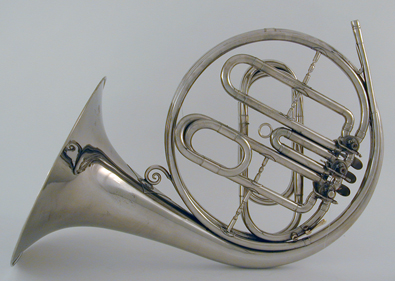 |
||
The Boston Musical instrument Manufactory was founded in 1869 as an amalgamation of the partners and workers of Graves & Co. and E. G. Wright & Co. (Catalogs claim the company was founded in 1841, the year Wright began operation in Boston.) From the early 1850s Wright had abandoned the double piston Vienna valve, incorporating instead the string-operated rotary valve as found on these horns, so this horn design predates the founding of Boston Musical Instruments Manufactory. Soon after the merger with Graves, however, Wright withdrew and joined Hall and Quinby. |
|||
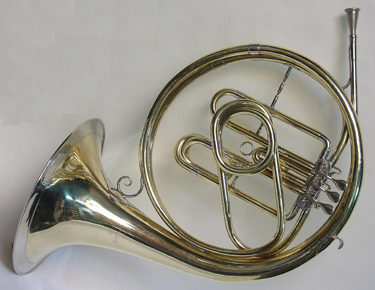 |
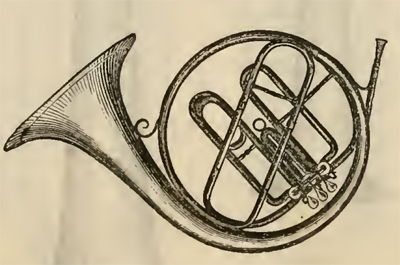 |
||
|
|||
